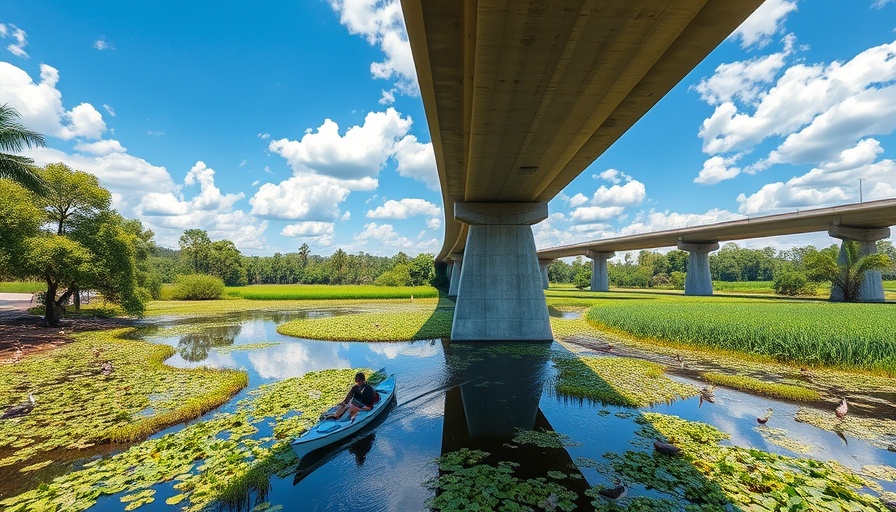
A Growing Flood Insurance Gap: Are You Protected?
In the United States, a troubling trend is emerging as severe weather patterns and climate change amplify flood risks. Shockingly, a mere 4% of homeowners maintain federal or private flood insurance, despite numerous counties facing flooding incidents in recent decades. This statistic underscores both a lack of preparation among residents and the rising costs associated with flood insurance, which can add 30 to 75 percent on top of regular homeowners' policies. As a home and property owner in Muskegon, these figures should prompt serious reflection about the adequacy of your current insurance coverage.
Understanding Why Climate Change Matters
Leading climate scientist Katherine Hayhoe emphasizes that climate change is not the root of all new risks but rather an escalator for existing threats. The insistence on preparing for future impacts is critical; residents must look beyond historical weather patterns and start incorporating up-to-date data and communication strategies into their planning. For landscapers and developers, understanding these dynamics is crucial for effective project execution in an uncertain climate.
Barriers in Implementing Natural Climate Solutions
Recent research from the University of Colorado at Boulder delves into the obstacles hindering the adoption of natural climate solutions, revealing nearly 2,500 barriers across 135 countries. Insufficient funding, poor public information, ineffective policies, and widespread skepticism were highlighted as major roadblocks. As green space experts in Muskegon, addressing these barriers is integral to paving the path for nature-based solutions such as reforestation and wetland restoration. Without a collective effort to overcome these hurdles, progress in the landscaping industry can be stifled.
Local Initiatives: Overcoming Funding Setbacks in Baltimore
In Baltimore, the Middle Branch Resiliency Initiative serves as a beacon of hope amid financial setbacks. Undertaken by landscape architects, this project has faced a loss of $32 million in federal funding due to budget cuts. Fortunately, collaborative support from the state, local agencies, and private philanthropies has helped bridge the funding gap. This scenario underscores the value of community cooperation and the drive to create sustainable solutions despite challenges. Those involved in outdoor landscaping and development in Muskegon could take a page from this playbook by rallying local stakeholders around shared goals.
Global Cities Lead in Emission Reductions
While nations often lag in climate action, many leading cities are taking the reins. A striking statistic shows that cities part of the C40 network have reduced per capita greenhouse gas emissions by an average of 7.5% between 2015 and 2024. This trend showcases an essential message for Muskegon’s landscapers and developers: local efforts can have a substantial impact on broader environmental goals. It’s time to embrace eco-friendly practices and sustainable designs as part of your branding and service offerings.
The EU’s Ambitious Emission Targets: A Lesson in Accountability
The European Union’s commitment to a 90% emissions cut by 2040, while under fire for its allowance of carbon offset purchases, presents a case study for viable climate actions. With COP30 in Brazil on the horizon, their strategies are under scrutiny to ensure genuine progress rather than merely symbolic actions. Muskegon professionals in the landscaping sector can derive valuable insights from international cases, learning how to champion genuine sustainability within local contexts.
In conclusion, the challenges posed by climate change demand a proactive approach to landscaping and urban planning within our communities. The insights gathered here accentuate the need for responsible practices, collaboration, and a forward-thinking mindset. Whether you're involved in outdoor landscaping, architectural design, or property management in Muskegon, understanding these dynamics is essential for future success.
Get involved with local initiatives and consider how you can enhance your role in supporting sustainable practices. Explore tailored turf solutions, boost your brand with greener options, and help shape a resilient Muskegon for the future!
 Add Row
Add Row 
 Add
Add 


Write A Comment